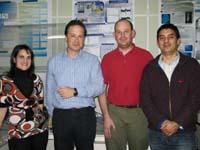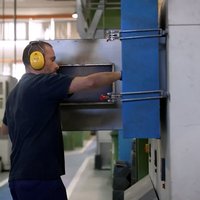Strict movement control

Specifically, two types of materials are being investigated that could have a great future in the applications of microponimiento: alloys with shape memory (SMA) and alloys with magnetic or ferromagnetic memory (MSM or FSMA). They are all new and intelligent materials for their ability to store shape memory and other innovative features.
Shape memory alloys are able to recover the original size and shape after a deformation process. The most common alloy of this type is called nitinol. It is a nickel and titanium alloy in an approximate proportion of 50%. It is on sale in the market and is usually thread shaped.
Magnetic memory alloys are ferromagnetic materials capable of recovering the original shape and size after the application of a magnetic field. They are not on sale and currently only produced in research laboratories.
The UPV-EHU team of researchers has built a number of devices that could be useful in light robotics using these shaped memory materials, and is currently primarily engaged in research on new applications for light electromechanical systems or miniatures.
Artisanal prototypes
SMA alloys have been used so far in actuators for low precision applications. However, the UPV research team has developed a series of experimental devices that can significantly improve the positioning control of these actuators.

As for magnetic or ferromagnetic memory alloys, UPV researchers have designed a new device to control objects with an accuracy of approximately 20 nanometers.
Despite being a handcrafted device, researchers do not doubt that all this can be improved and consider that it may be able to replace one of the most accurate drives of today. In fact, the main advantage of these devices made with memory alloys of ferromagnetic form is that when they reach the right position they do not consume energy. Therefore, they can be useful in applications such as large telescopes. These telescopes have a lot of mirrors that must move with great precision to focus properly.
These handcrafted devices allow you to know the basic characteristics of materials at the laboratory level. However, it may also be useful in the future for the launch of prototypes of light robotics, microwearability and nanoopposition devices.

Buletina
Bidali zure helbide elektronikoa eta jaso asteroko buletina zure sarrera-ontzian










